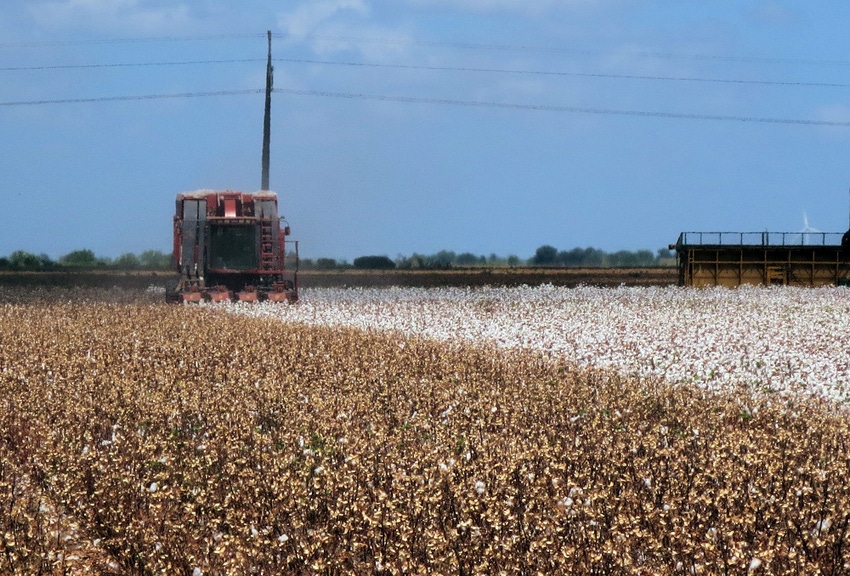
As cotton harvest winds down in South Texas, growers are looking at above average yields, thanks in part to abundant rainfall last fall and winter. They are also looking at a market that’s shown a little uptick over the past few weeks and may be checking out some new tools to improve moisture management for future crops.
Texas AgriLife Extension and research scientists are featured in several reports on crop updates, market movements and new technology.
We’ve collected four new reports that might be of interest to cotton and other row crop producers as the 2016 season nears and end in South Texas.
For the latest on southwest agriculture, please check out Southwest Farm Press Daily and receive the latest news right to your inbox.
South Texas harvesting ‘healthy yields’ as season winds down
South Texas row crop producers are finishing up a very good crop year, thanks to abundant rainfall last fall and winter that replenished deep soil moisture.
Cotton, grain sorghum and corn producers report healthy yields. The hot summer also helped mature the crops, according to Texas AgriLife Extension specialists.
Cotton harvest, about 130,000 acres in the Lower Rio Grande Valley, is just underway with expectations of above average yields.
Seed treatment can improve water use efficiency
More cotton on less water could be more than a pipe dream for Texas producers, thanks in part to research efforts of Dr. Greg Sword, a Texas A&M entomologist.
A commercially available seed treatment from Indigo Ag called Indigo Cotton may be a factor.
Sword and industry partner Indigo say that under some conditions yield can increase 10 percent over untreated crops, with no special crop management inputs beyond a simple endophyte microbial coating of the planting seed.
Sword’s lab has shown that some endophytes can reduce pest pressure on cotton as well. In short, the process means more profit for the producer with no added stress on the environment.
“As an entomologist, my first research initially focused on the important effects microbes could have in conferring resistance in cotton to insects and nematodes and potentially affect cotton yields in that way,” Sword said.
Cotton prices likely to stay within 65 to 78 cents range for near term
Texas AgriLife Extension Service cotton economist John Robinson can see no underlying market fundamentals that would move cotton prices out of the 65 to 78 cents trading range over the next few months.
��“Overall, we have weak demand fundamentals,” said Dr. John Robinson, who was part of a panel of experts who spoke during the Ag Market Network’s roundtable at the New York Stock Exchange recently.
Texas production remains a bit iffy following excessive hot, dry weather over the past 30 days. Robinson says production could stretch to hit 7 million bales on the high side and the five-year average of 5.5 million bales on the low end. “The U.S. Department of Agriculture has forecast 6.6 million bales in 2016, which is splitting the difference,” he says.
New irrigation manual available for South Texas
Farmers in South Texas who depend on irrigation to supply at least part of their crops’ water demand, have a new tool to improve efficiency and conservation.
The “South Texas Irrigation Training Program Manual,” a publication of the Texas Water Resources Institute and the Texas A&M AgriLife Extension Service, is available at: http://twri.tamu.edu/publications/educational-materials/2016/em-121/.
“We have updated a previous manual to better meet the needs of the Lower Rio Grande Valley and to incorporate currently available and new educational materials into a convenient resource,” said Dr. Kevin Wagner, the institute’s deputy director for engagement in College Station.
The manual includes relevant methods of irrigation, installation costs, water use efficiency and economic analysis.
About the Author(s)
You May Also Like






